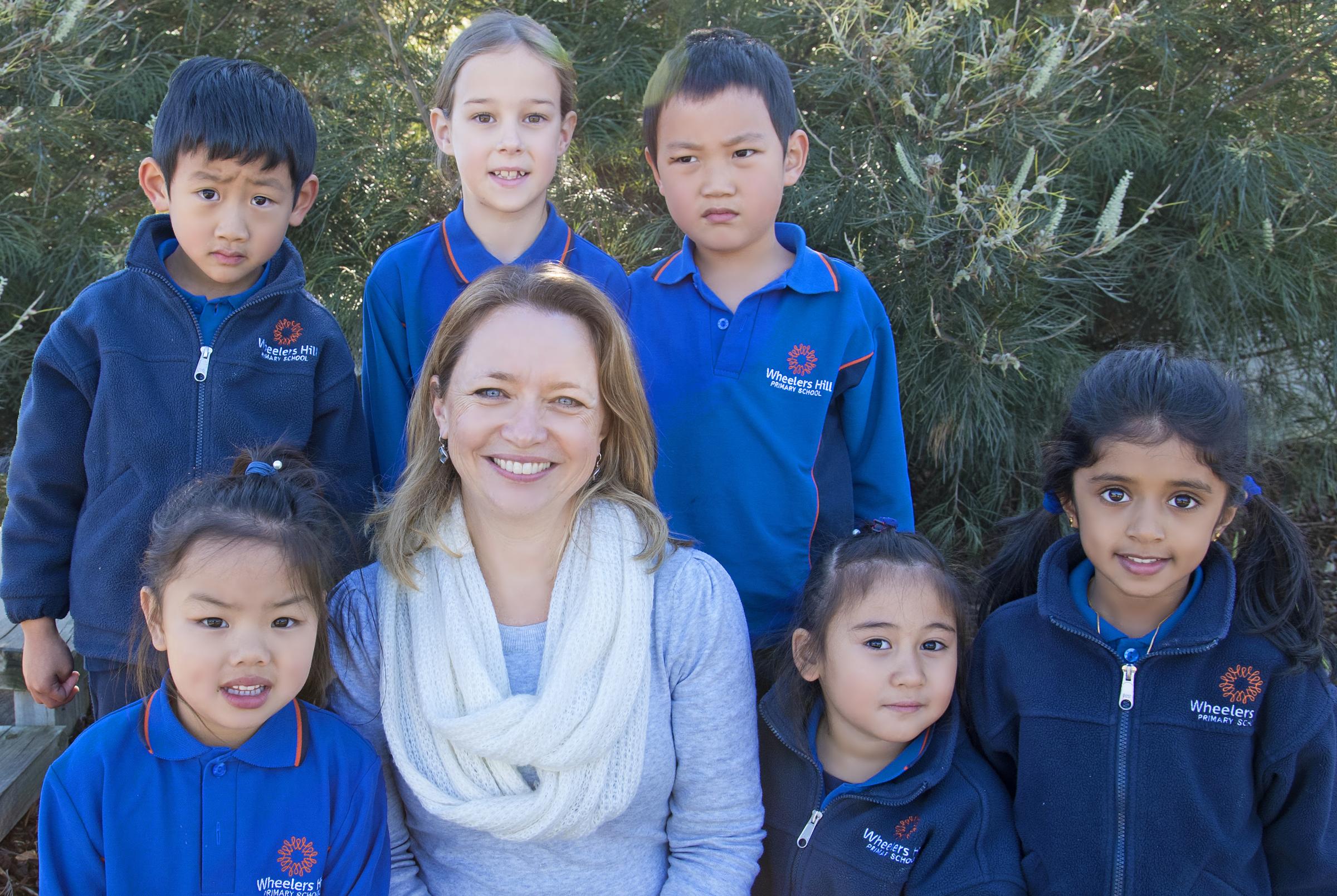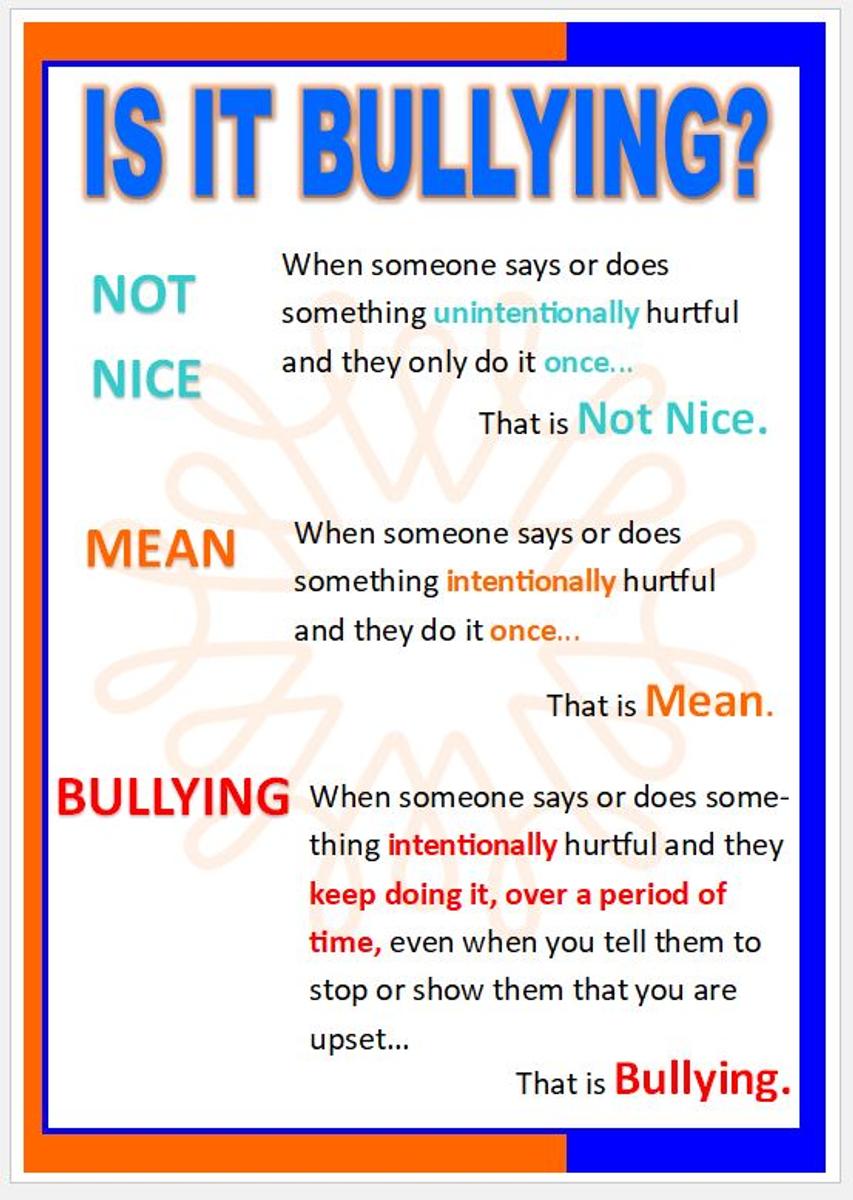Assistant Principal's Report Katrina Spicer - Welfare and Wellbeing

14th June, 2019
Is it Bullying?
We all want our school to be a safe place where everybody feels respected, safe and supported. Everyone who attends our school, be it students, parents, families, staff, helpers and other visitors have a right to go about their day in the knowledge that our school is a safe environment. In the last newsletter, I wrote about Child Safety and what our school is doing to meet our obligations under the Child Safe Standards. This week, I am writing about bullying, and what we as a school are doing to ensure our students understand what bullying is and what they can do about it if it occurs.
According to the Bullying No Way! website, the national definition of bullying says:
Bullying is an ongoing and deliberate misuse of power in relationships through repeated verbal, physical and/or social behaviour that intends to cause physical, social and/or psychological harm. It can involve an individual or a group misusing their power, or perceived power, over one or more persons who feel unable to stop it from happening.
Bullying can happen in person or online, via various digital platforms and devices and it can be obvious (overt) or hidden (covert). Bullying behaviour is repeated, or has the potential to be repeated, over time (for example, through sharing of digital records).
Bullying of any form or for any reason can have immediate, medium and long-term effects on those involved, including bystanders. Single incidents and conflict or fights between equals, whether in person or online, are not defined as bullying.
Behaviours that do not constitute bullying include:
- mutual arguments and disagreements (where there is no power imbalance)
- not liking someone or a single act of social rejection
- one-off acts of meanness or spite
- isolated incidents of aggression, intimidation or violence
However, these conflicts still need to be addressed and resolved.
Why do people bully others?
According to the Bullying No Way! website, people who bully others are often motivated by the status and social power they can achieve through bullying. Some may bully others to compensate for what is happening to them and their own feelings of powerlessness.
Bullying behaviours can also be copied by others. Investigating how students view the situation and why they think the bullying is happening is central to appropriate school responses.
What are we doing to prevent and address bullying behaviours?
We have a Bullying Prevention Policy which is available under Teaching and Learning / School Resources on Compass.
We have a number of programs and strategies in place to build a positive and inclusive school culture, including Restorative Practices, The Resilience Project, School Wide Positive Behaviours, Respectful Relationships and a strong School Values Program. Our years 3, 4, 5 and 6 students recently took part in the Resilient Youth Survey which anonymously surveys students on their experiences of bullying. Feedback from this year's survey will be provided to the school early in Term 3.
The Social and Emotional Learning Curriculum teaches students about what constitutes bullying and how to respond to bullying behaviour assertively and appropriately, promoting resilience, assertiveness, conflict resolution and problem solving.
Students are encouraged to look out for each other and to talk to a teacher or another trusted adult about any bullying they have experienced or witnessed.
Bullying complaints are always taken seriously at our school, and we will always respond sensitively. In most circumstances, we encourage students to report to their class teacher first, however students are welcome to report their concerns to myself as the Assistant Principal responsible for Welfare and Wellbeing, or another trusted adult within the school.
The majority of bullying issues can be resolved through the use of Restorative Practices. A restorative approach enables all parties to have a voice. It encourages empathy and enables those affected to say how they have been affected and what needs to happen next to set things right. Occasionally further interventions may be required such as the offer of counselling, mediation, a Student Support Group or a Behaviour Support Plan.
All classrooms now display the poster below. I encourage all parents to discuss the definition of bullying with their children and decide which trusted adult they could talk to at school if bullying happens to them.
For further information about bullying, visit the Bullying No Way! website: https://bullyingnoway.gov.au/
Parenting Ideas Article
Creating Healthy Digital Habits in Kids
by Martine Oglethorpe
Surveys have consistently shown that children have been exposed to rising amounts of screen time in recent years, as well as parents struggling to manage the moods and time demands of children and young people.
As kids spend increasing amounts of time tethered to a digital device, it makes sense that the time they are online, is time well spent. As parents we're often concerned about the connections children and young people are making and the subsequent impact on their wellbeing. We're often concerned about the content they're consuming, and how helpful, relevant and safe it is for them. Rightfully, there's concern that the time spent online, scrolling, searching and swiping, may well be time better spent on other pursuits.
Obviously, these digital devices won’t be going anywhere fast. So, we need to look at how we remain in control of our screen use, and ensure the time we're investing online is adding something helpful, positive and meaningful to our lives.
Here are a few tips to help you be more intentional with your scrolling. Being mindful of how time spent on devices, is certainly not just reserved for young people.
Encourage creation not just consumption
Here's a simple question. Are you more of a consumer or creator when you're online? When you spend your online time in creative mode such as making things, creating own videos, editing photos, writing blogs, coding a video game or composing a song you are getting something tangible in return for the time spent on a screen. You are achieving and creating something, rather than simply consuming the content made by others, which is generally far more satisfying as a user.
Look at who you are following
Consider the real purpose of the people on your feeds. Are you following celebrities you can never relate to, companies you would never buy from, or people who bring you down rather than teach or inspire you? Ideally, you'll follow people and companies that you can connect with and add positively to your life.
So what about your child? If they have a passion for something, help them find suitable people to follow. For instance, if they love space, search for NASA and related accounts. If they love photography, help them find great photographers sharing their work online. When they're following people that teach, inspire and ignite their passions, they're less likely to spend valuable time with energy zappers.
Do a digital de-clutter
We all have so many apps on our devices and many are just clutter that we used once and no longer visit or don’t add anything constructive to our day. Maybe you could try deleting all the apps on your phone and only put those back that you need to make your day easier, or that offer you something positive. This forces us to look at the real benefits, or not, of the apps and thus the time we are spending online. Could there be better games for your kids to play? Are there better videos for them to watch than the ones that the YouTube algorithm believes they want to see?
Role model good practises
Most kids learn much more from what they see and experience, rather than from what they are told. As a parent be sure to be intentional with your screen-time. Do you:
• Follow people that support you, challenge you in helpful ways or inspire and lift you up?
• Interact in positive ways?
• Give people your attention rather than scroll whilst others are talking to you?
• Put your digital devices away in order to fit all the other important things into your day?
Setting your kids up with good online habits will help make these practises the norm. If you don’t want your children falling prey to the harmful and unhelpful experiences online, you need to be sure that they are focusing on positive and helpful screen-time pursuits.
Be intentional with your scrolling, and you'll ensure you're getting a much greater return on your online investment.
Katrina Spicer
Assistant Principal - Welfare and Wellbeing

